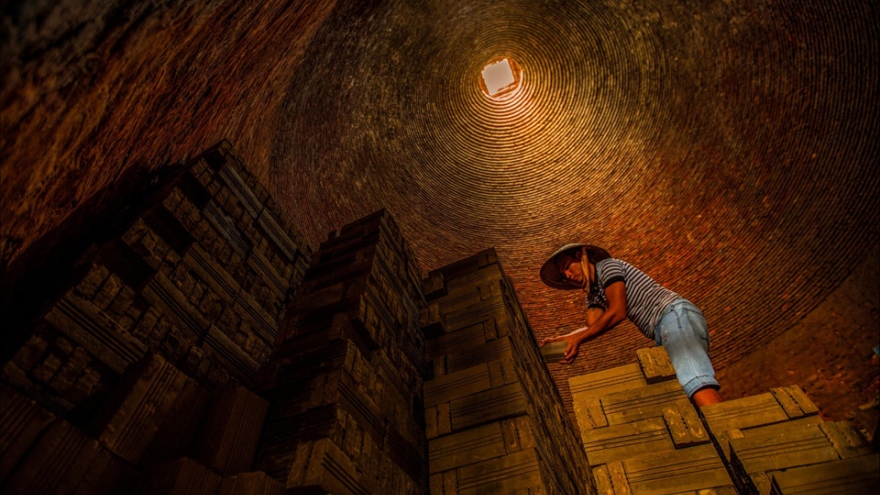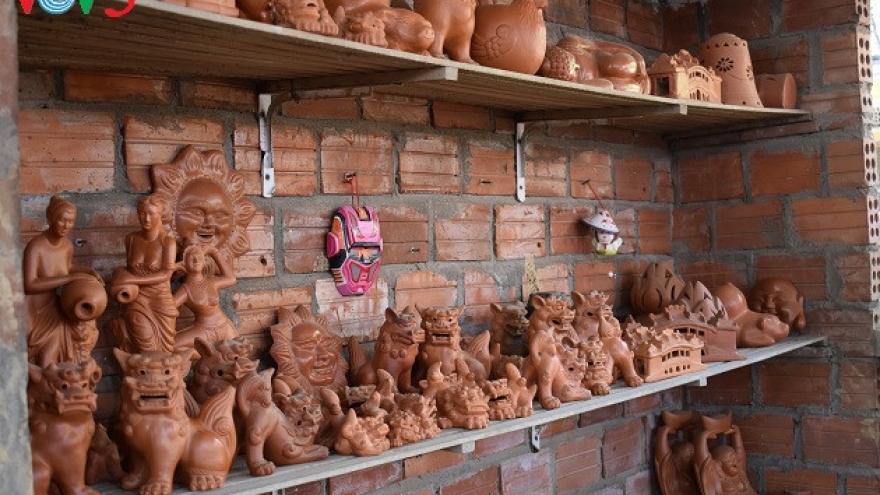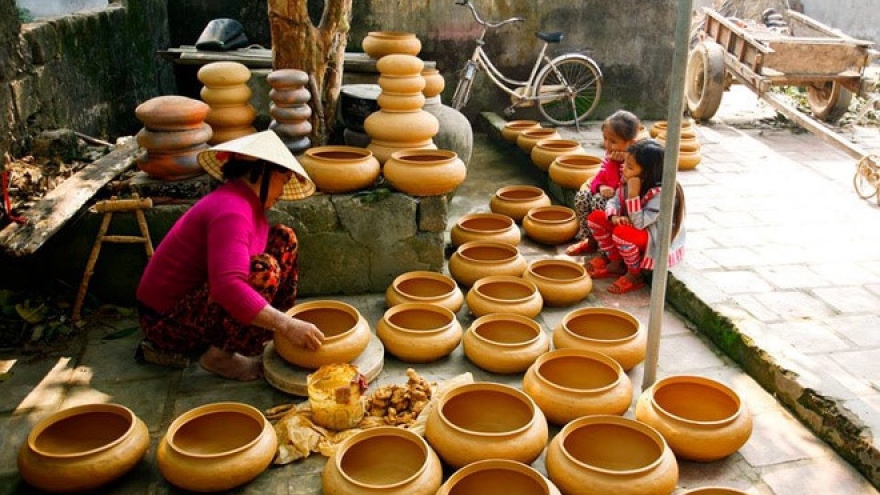Artisans fight to preserve traditional pottery in central Vietnam
As newer generations turn away from the hallmark pottery of a village in the central province of Quang Ngai, two artisans have been fighting to revive their time-honored craft.
 |
| Artisan Ngo Dao Giang poses with a My Thien pottery vase. |
They are Dang Van Trinh, a fourth-generation practitioner and Ngo Dao Giang, 38.
Trinh is the only devoted artisan that still practices the craft in a desperate attempt to preserve it.
He nostalgically recalls the village’s heyday when merchants would flock in sampans docked along the iconic Tra Bong River, to purchase the handmade wares.
Members of The Nguyen Dynasty (1802 - 1945), regarded the items as prized offerings and gave them as gifts to other countries with which they had diplomatic relations.
Trinh’s Dang family has also produced several of the village’s finest craftsmen.
His paternal grandfather, Dang Mau, was lauded by one of the Nguyen kings for his exceptional skill.
The art, however, began to lose appeal as Trinh grew up.
A cooperative was once established, but failed to operate successfully in the market-oriented economy.
His worst fears were soon confirmed around 20 years ago, when he realized that he was the only professional potter left in his village.
“There were times when I was on the verge of giving up as I was so lonely. It was my grandfather’s words and my predecessors’ efforts that kept me going,” the veteran artisan shared.
In his village’s gloomiest days, Trinh’s confidence was bolstered by the resumption of a pottery kiln owned by Giang around 10 years ago.
Tucked away in a small alley, Giang’s home has been turned into a cozy space to display his My Thien pottery.
The younger artisan also runs a snug café where his patrons can sit for hours to contemplate the exquisite art works and Trinh’s descriptions.
The café has become a favorite stop among local tourists and foreigners.
Giang revealed that his main goal is to restore the long-standing craft, which thrived in his paternal grandfather’s time but has withered after it was passed down to his father.
“I would play with clay as a child and thus have no difficulty crafting technically demanding shapes such as dragons, phoenix, and birds now. I’ll try to keep the dying art alive at all costs,” he noted.
Promotion efforts
Last August, Trinh and Giang took 200 My Thien pieces of pottery to the 2017 Hue Festival of Traditional Crafts in a bid to promote their village’s hallmark style.
Focused on highlighting the best of traditional Vietnamese craft, the festival gathered more than 300 artisans from 40 craft villages all over Vietnam.
It also saw the attendance of 34 artisans from Japan, South Korea, and China.
The My Nghe collectibles proved to be on par with their counterparts from other craft villages, including Bat Trang (Hanoi), Phuoc Tich (Hue City in central Thua Thien-Hue Province), Thanh Ha (Hoi An City in central Quang Nam Province) and Bau Truc (in south-central Ninh Thuan Province).
Lam Zu Xenh, who accompanied Trinh and Giang to the Hue craft festival, disclosed that their pieces had won the hearts of festival organizers and visitors, who expressed their wish to help preserve the craft.
Also at the festival, a pair of vases by Giang were bought by a pottery collector for over VND3 million (US$ 131).
“The pair, which was among my favorites, blends ancient and modern pottery and features ornate patterns,” Giang proudly said.
Minh Hanh, a seasoned ao dai (traditional long gown) designer, was also behind the promotional effort.
Impressed with the items while seeking inspiration for her ao dai, she assisted the men in helping My Thien pottery earn its well-deserved reputation.
To keep the endeavors going, Trinh churns out 2,000-3,000 decorative and household items every two weeks, while Giang goes to great lengths to take his products across the country and visit other pottery villages.
“While pottery in other villages is thriving, items from My Thien have almost fallen into oblivion. We have to do something immediately,” Giang stressed.
In 2013, he asked his friends in Ho Chi Minh City to market his products, which has attracted more potential clients and visitors to the village since.
He further revealed his plans to adopt a gas-operated kiln and launch a creation camp in addition to holding exhibitions at My Thien.
“I’m positive that Trinh’s and Giang’s dedication will draw more like-minded artisans in the near future,” Dr. Nguyen Dang Vu, director of the Quang Ngai Department of Culture, Sports and Tourism, said.
The department is also working on a plan to restore the craft and turn My Thien pottery village into a tourist attraction, he added.



